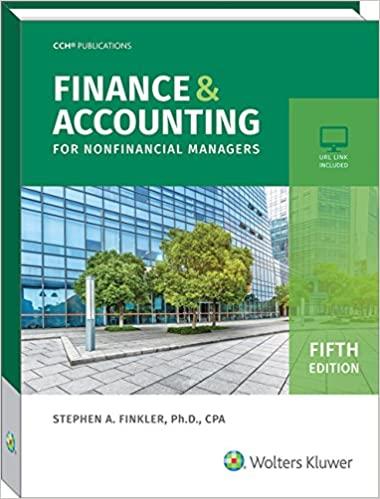Question
At the end of each year, Patty Chu, the chief accountant at Rex Lin Enterprises, a Singapore-based trading company, reviews long-term assets at the end
At the end of each year, Patty Chu, the chief accountant at Rex Lin Enterprises, a Singapore-based trading company, reviews long-term assets at the end of each year to determine whether changes are called for in how these assets are depreciated. In December 2017, her attention focused on two assets in particular:
Date acquired Cost Accumulated depreciation end of 2017 Useful life Residual value Warehouse 1/1/13 $200,000 $50,000 25 years $10,000 Building 1/1/12 1,600,000 228,000 40 years 100,000
Date acquired cost Accumulated depreciation end of 2017 Useful life Residual value
Warehouse 1/1/13 $200,000 $50,000 25 years $10,000
Building 1/1/12 1,600,000 228,000 40 years 100,000
Patty is proposing the following changes:
For the warehouse: a decrease in the useful life to 20 years and a decrease in residual value to $6,000.
For the building: an increase in the useful life to 50 years and a decrease in the residual value to $55,000.
Before agreeing to the changes, Pattys bosses would like to know what the depreciation charges will be for each asset if the changes are adopted. All assets are depreciated using the straightline method.
Required;
Calculate the revised annual depreciation expenses for each asset in 2018 and compare them to what the expenses would be if the changes were not made.
Step by Step Solution
There are 3 Steps involved in it
Step: 1

Get Instant Access to Expert-Tailored Solutions
See step-by-step solutions with expert insights and AI powered tools for academic success
Step: 2

Step: 3

Ace Your Homework with AI
Get the answers you need in no time with our AI-driven, step-by-step assistance
Get Started


